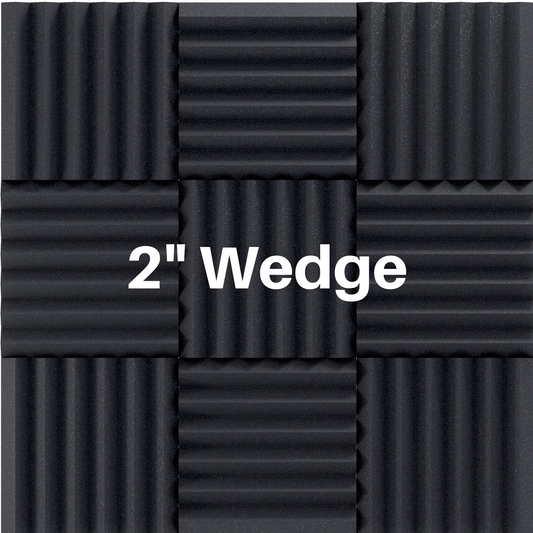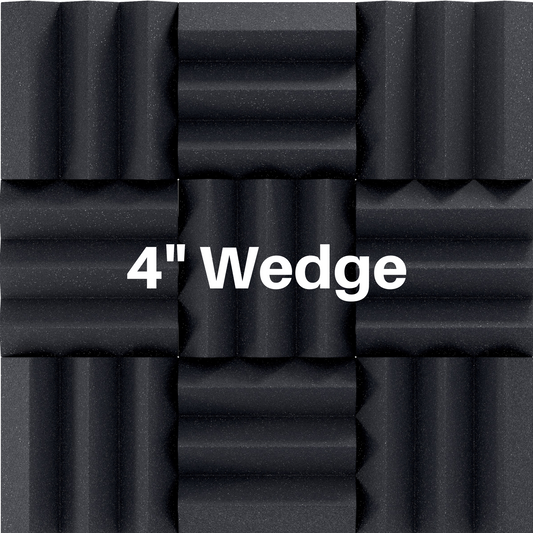Early Reflections Definition - Effects & How To Treat Them
Share
What are early reflections?
Early reflections are the first sound waves that bounce off surfaces in a room after being emitted by a sound source. They arrive at the listener's ears after the direct sound, creating the perception of spaciousness and depth in a sound field.
Early reflections play an important role in the timbre and spatial qualities of sound in a room, and they can be influenced by the size, shape, and acoustic properties of the surfaces in the environment.
Proper management of early reflections is important in audio production and sound system design. The goal is to ensure accurate sound reproduction and an optimal listening experience.
Although there are varying viewpoints on the construction of rooms intended for music playback using loudspeakers, there is widespread consensus among designers that the listener's position should be free from "first-order" or "early reflections". These reflections can arise from surfaces such as walls, ceiling, recording console, or even the floor.
In large rooms, strong early reflections can create issues due to the potential for a significant time gap between the direct sound and these reflections. On the other hand, in small rooms, the problem is the opposite - the delay between the direct and reflected sound is brief.
Let’s dig a little deeper into what happens with early reflections in a small room.
How do early reflections impact the sound in your room?
The following diagram depicts speakers and a listener, with the direct sound represented by the teal paths and a reflection from the side walls indicated by the red paths.

Now, here is another diagram showing what happens when you add absorption to your speakers’ reflection points.

Suppose that the direct path measures precisely 1 meter, while the reflected path is 1.334 meters. Assuming a speed of sound of 344 meters per second, the reflected sound will reach the listener exactly 1 millisecond later than the direct sound. This duration is too short for our ears to perceive it as a noticeable echo. However, let’s see what happens when the direct and reflected sounds merge at the listener's ear.
For 500 Hz, the period is 1/500 = 0.002 s, or 2 ms.
Here we graphed the direct sound wave, and then graphed the direct sound vs the reflected sound which is delayed by 1 ms.

The 1 ms delay causes the phase of the delayed sound to be the exact opposite of the direct sound. The effect is that these will cancel each other out! This is effectively like turning on an eq and filtering out 500 Hz.
This is known as destructive interference. It is the same effect that causes nodes in a standing wave and can seriously mess up the frequency response in your room! You need to make sure your reflection points are treated with absorption or diffusion to avoid this in your room.
For 1000 Hz, this difference of 1 ms would amount to a delay of one complete cycle. The period is 1/1000 = 0.001 s, or 1 ms.

This creates what is called Constructive Interference in your room. Constructive Interference is the sum of the direct and reflected signals at this frequency that would be (not double) but as much as twice the amplitude of the direct sound.
Comb Filtering Effect From Untreated Early Reflections
When two or more sound waves with slightly different frequencies combine, they create a series of peaks and notches in the frequency response. In a room, early reflections from different surfaces can arrive at the listener's ears at slightly different times, causing these waves to combine and create interference patterns of constructive and destructive interference. The result is comb filtering.
The name "comb filtering" comes from the frequency response graph that resembles the teeth of a comb. This graph shows a series of peaks and notches in the frequency response of the sound, with some frequencies being amplified and others being attenuated.
Check out the graph below. This shows the frequency response of a room's direct sound and early reflection. Some of the frequencies will be canceled out and others will be boosted.

Photo Credit: Moulton Labs
How to stop the first reflections in a room?
The best way to treat early reflections is to create a reflection free zone.
What is s reflection free zone (RFZ)?
A RFZ is the area in your room around your listening position where no first reflection echoes will reach the listener. A RFZ is obtained by proper acoustic treatment of the first reflection points in your room.
One of the easiest ways to improve sound clarity in your recording studio is to treat your room's first reflections.
Treating first reflections is imperative because they are the most noticeable echoes and can seriously trick your ears! Not only are the first reflection echoes the most noticeable, but they can lead to further problems like comb filtering if left untreated!
Make life a little easier on your ears, and spend the time to learn how to create a RFZ for yourself!
In a professional mixing room or a home recording studio it is typical to have a two channel setup using a set of studio monitors. The main reflection points are on the back wall, side walls, ceiling and the front wall directly behind your monitors if they or not built into the wall.
In the below diagram you can see the reflection free zone in green.

As you can see there is acoustic absorption placed at the reflection points. The ceiling above the RFZ would be treated with absorption or diffusion. Also, the corners of the room will be treated with bass traps which offer low end absorption and help prevent standing waves in your room.
TRICK: The side wall reflection points can be found using the mirror trick! All you need is a small mirror. Sit in the listening position and have a friend move the mirror around on the side wall while you look into the mirror. When you can see your monitors in the mirror, that is a first reflection point!
Thanks for hanging in there and diving in deep about first reflections and how to treat them!
Read More:
Acoustic Treatment For Home Recording Studios - Multiple Design Ideas
What Is Noise Reduction Coefficient (NRC) ?
Full line of acoustic foam!
Check out our acoustic foam absorption panels and corner solutions!














